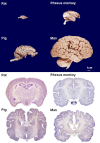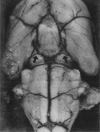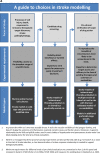Different strokes for different folks: the rich diversity of animal models of focal cerebral ischemia
- PMID: 20485296
- PMCID: PMC2949237
- DOI: 10.1038/jcbfm.2010.66
Different strokes for different folks: the rich diversity of animal models of focal cerebral ischemia
Abstract
No single animal model is able to encompass all of the variables known to affect human ischemic stroke. This review highlights the major strengths and weaknesses of the most commonly used animal models of acute ischemic stroke in the context of matching model and experimental aim. Particular emphasis is placed on the relationships between outcome and underlying vascular variability, physiologic control, and use of models of comorbidity. The aim is to provide, for novice and expert alike, an overview of the key controllable determinants of experimental stroke outcome to help ensure the most effective application of animal models to translational research.
Figures






References
-
- Agnati LF, Zoli M, Kurosawa M, Benfenati F, Biagini G, Zini I, Hallstrom A, Ungerstedt U, Toffano G, Fuxe K. A new model of focal brain ischemia based on the intracerebral injection of endothelin-1. Italian J Neurol Sci. 1991;12:49–53. - PubMed
-
- Alberts MJ, Atkinson R. Risk reduction strategies in ischaemic stroke: the role of antiplatelet therapy. Clin Drug Invest. 2004;24:245–254. - PubMed
-
- Allport LE, Butcher KS, Baird TA, MacGregor L, Desmond PM, Tress BM, Colman P, Davis SM. Insular cortical ischemia is independently associated with acute stress hyperglycemia. Stroke. 2004;35:1886–1891. - PubMed
-
- Alonso de Lecinana M, Gutierrez M, Roda JM, Carceller F, Diez-Tejedor E. Effect of combined therapy with thrombolysis and citicoline in a rat model of embolic stroke. J Neurol Sci. 2006;247:121–129. - PubMed
-
- Anderson RE, Sundt TM., Jr Brain pH in focal cerebral ischemia and the protective effects of barbiturate anesthesia. J Cereb Blood Flow Metab. 1983;3:493–497. - PubMed
Publication types
MeSH terms
Grants and funding
LinkOut - more resources
Full Text Sources
Other Literature Sources
Medical

